WordPress as a content management system is great, but what gives it its true power are all the plugins that can be added to it. Those plugins are what provides each site with its unique set of functionalities.
Some plugins are considered to be staples, for example, plugins that provide SEO, eCommerce, and digital marketing features, while other plugins can be seen as interesting add-ons that enrich a site with fun features that cater to the specific preferences the audience of every site has.
Considering the fact that there are millions of websites powered by WordPress, it’s understandable why there are more than plenty of plugins available for download and installation as well. To be more specific, currently, in the official WordPress repository there are more than 50.000 plugins.
Obviously, a site doesn’t need all 50.000+ plugins, first of all, because that would have to be a hell of a powerful site, and second of all because many plugins serve the same purpose and provide the same functionalities, just in their own specific way.
That is why each site has its own collection of must-have plugins. And often sites of a similar type will have plugin collections that consist of almost the same set of plugins.
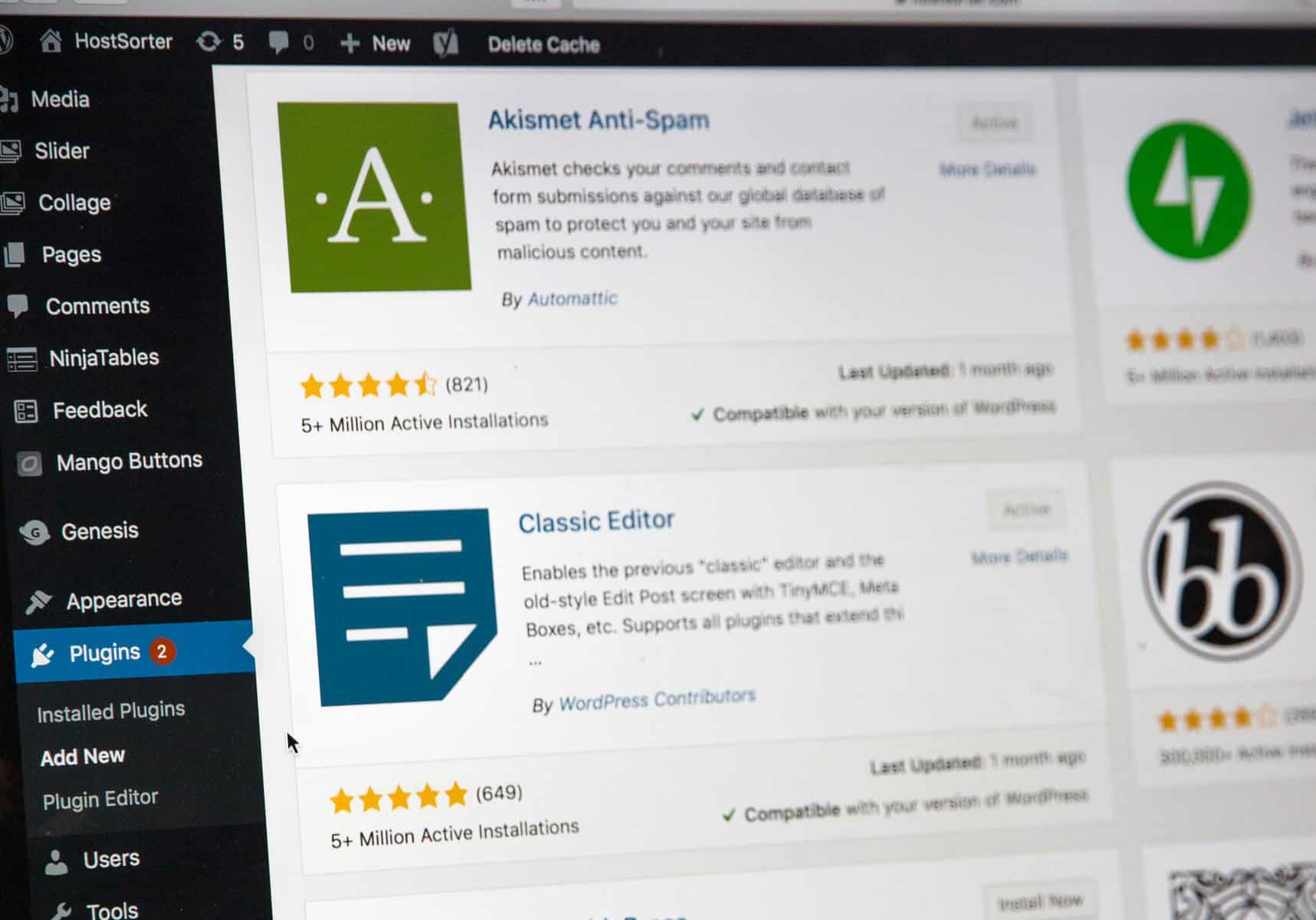 The differences and similarities between plugin collections different types of websites use is a topic for another time. The topic that we want to focus on in this article however is, how the plugins in those collections can be installed all at once, or in other words how can we install multiple plugins in bulk.
The differences and similarities between plugin collections different types of websites use is a topic for another time. The topic that we want to focus on in this article however is, how the plugins in those collections can be installed all at once, or in other words how can we install multiple plugins in bulk.
Since WordPress unfortunately, does not provide its users with a feature that allows the bulk installation of plugins, a lot of people assume that doing so just isn’t possible, so they resort to what is in their eyes the only possible solution, installing all the plugins one by one.
But we are very glad to tell you that bulk plugin installation is in fact a possibility and can be done in more than one way. What those ways are and how you can utilize them on your own is exactly what this article will be talking about. So if that is something that you want to learn more about, sit back and enjoy reading all the information we have prepared for you!
Methods for collectively installing plugins
Using the WordPress command-line interface
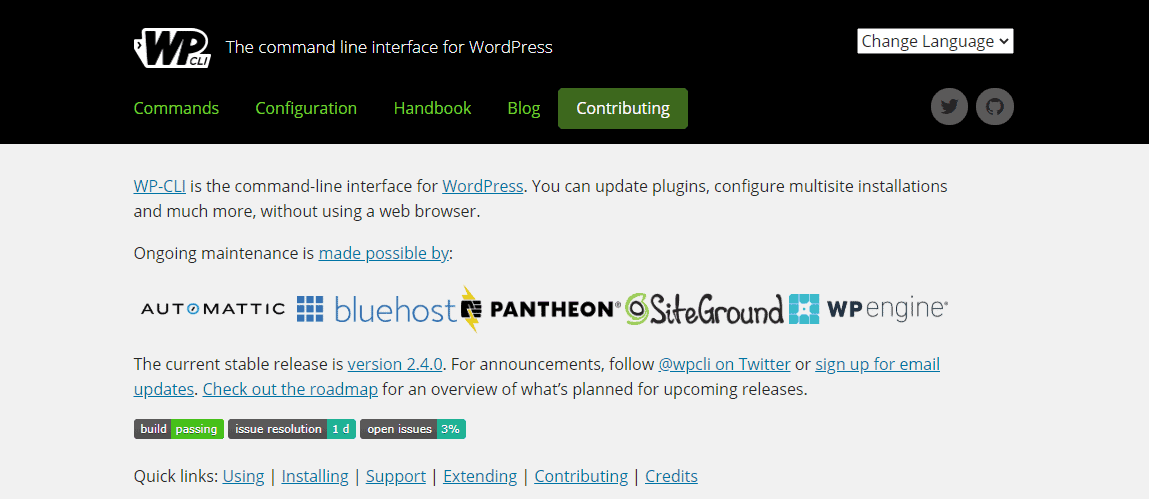 One of the most common ways of installing plugins in bulk is through the WordPress command-line interface. If we are being honest, this isn’t the easiest or a very liked method, just like most other methods that don’t involve a graphic user interface.
One of the most common ways of installing plugins in bulk is through the WordPress command-line interface. If we are being honest, this isn’t the easiest or a very liked method, just like most other methods that don’t involve a graphic user interface.
Using any command line will require a fair amount of technical knowledge and of course, familiarity, with all the commands necessary for completing tasks, and the same goes for the WordPress command line as well. But then again, that isn’t something that can’t be mastered with just a bit of practice.
It’s also important to note that thought the CLI you will be able to not only install plugins but also to uninstall, activate/deactivate and update them in bulk too. Meaning that if you get the hang of using the CLI, it can be extremely useful.
But before being able to do anything through the command-line interface, you will first have to make sure that you have it installed on your server. After you have done that, only then will you be able to proceed with the bulk installation of plugins. If it happens that you in fact don’t have the CLI installed, then you will have to take care of that issue before attempting to do anything else.
Because the installation of the CLI itself is a bit of a tricky endeavor, much trickier than installing plugins collectively, we have picked out the perfect article/guide that will take you, step by step, through both the process of setting up the command line interface and installing plugins using it.
That article is named How to Bulk Install Plugins and it consists of two sections, each dedicated to one of the tasks that you need to complete. Both sections are extremely detailed and will not leave room for any confusion or the need to refer to any other guides or resources regarding this matter. So you can be sure that all the information this article will provide you with, will be clear, concise, and of course, sectioned into steps that are extremely easy to follow.
Using the WP Reset plugin and its collections feature
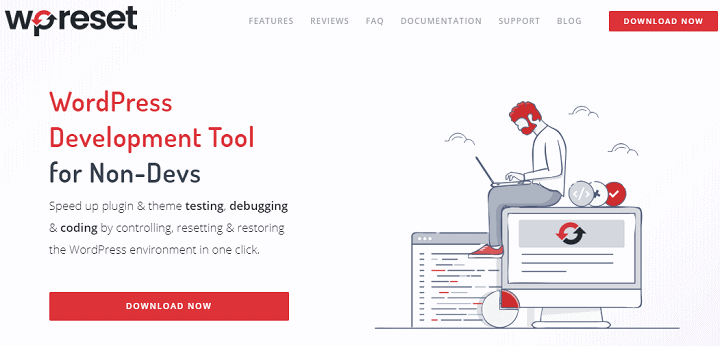
After talking about the “scary” command-line interface method, it’s only fair that we present you with an easier and more user-friendly method of getting the bulk installation of plugins done, a method that revolves around the use of the WP Reset plugin.
A little bit about the WP Reset plugin
Although we are going to mostly focus on how this plugin can help you make the bulk installation of plugins happen, it’s important to say that this plugin is a tool capable of doing much more than that.
As its name suggests it can be used to fully or partially reset a site since it does come packed with different reset features and site cleaning tools that can get rid of everything your site has accumulated over time.
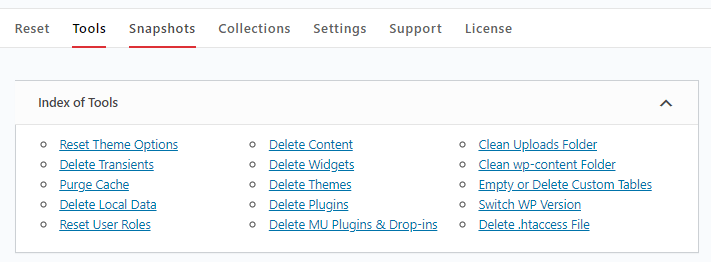 Another great thing about this plugin is that it creates snapshots of your database automatically before any change has been made, and by doing that allows you to revert back to a previous state your site was in, prior to any unwanted changes or errors occurring.
Another great thing about this plugin is that it creates snapshots of your database automatically before any change has been made, and by doing that allows you to revert back to a previous state your site was in, prior to any unwanted changes or errors occurring.
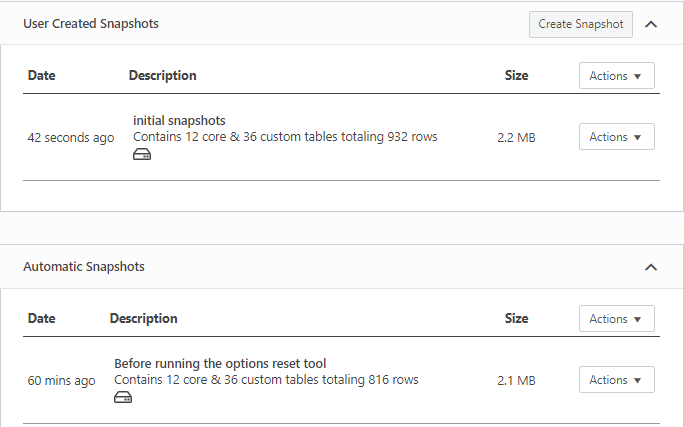 Besides these, the plugin comes with plenty of other features as well such as the Emergency Recovery Script, a Whitelabel option, and so much more that you can explore by visiting the official site of the WP Reset plugin.
Besides these, the plugin comes with plenty of other features as well such as the Emergency Recovery Script, a Whitelabel option, and so much more that you can explore by visiting the official site of the WP Reset plugin.
As much as we would love to talk more about all the tools and features offered by this plugin, it’s time to finally go over the Plugins & Themes Collections feature which makes it possible for you to install a bulk of plugins in just 1 click. So, let’s jump right into it!
The WP Reset Plugins & Themes Collections feature
This feature really is something that you can’t find in a lot of plugins and something that will become your ultimate time saver.
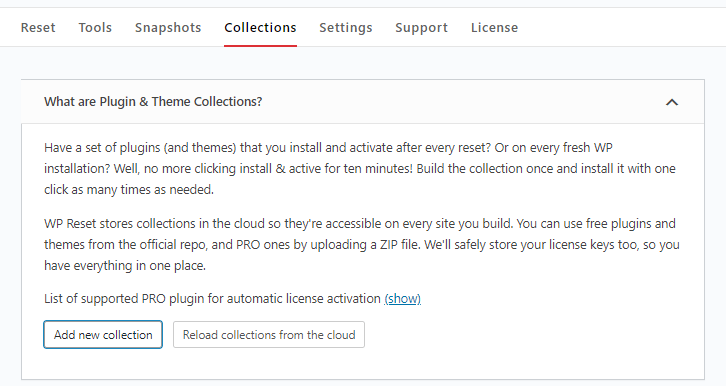
The feature allows you to create a collection of plugins from WordPress.org (which will be displayed to you on a drop-down menu) and/or plugin ZIP files that you have downloaded on your computer.
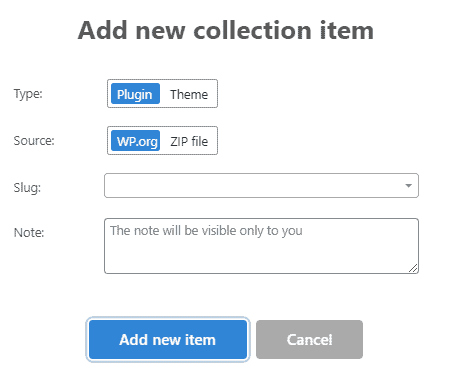
Once a collection has been created, you can then choose to just install it or install and activate it with or without deleting the existing plugins on your site first.
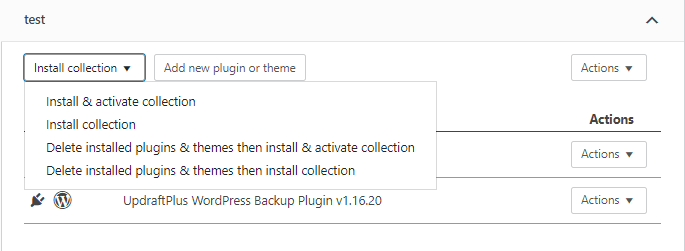 Now you might be thinking “But what about my license keys for all those plugins?”. Don’t worry, your precious license keys will be stored in the collections, safely, in an encrypted format so you don’t have to lose sleep by thinking someone will get ahold of them.
Now you might be thinking “But what about my license keys for all those plugins?”. Don’t worry, your precious license keys will be stored in the collections, safely, in an encrypted format so you don’t have to lose sleep by thinking someone will get ahold of them.
Maybe the best thing about this collections feature is the fact that the collections are stored in the cloud, the WP Reset Cloud, Dropbox, Google Drive, or pClould, whichever you prefer the most. And after a collection has been stored in the cloud, it can then be used on any site that has WP Reset installed and activated on it. This can come in very handy to people that have multiple blogs/sites that they often reset and install the same group of plugins on.
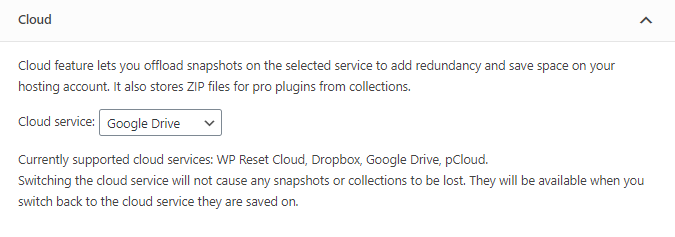
A collection you create with the WP Reset plugin can be installed not only on a new site or after a reset, but at any time that you want. The number of collections you can create is unlimited and so is the number of plugins a collection can consist of. And of course, collections can be updated by deleting or adding plugins whenever you please.
Lastly, we want to point out that a collection can hold not only plugins but also themes from WordPress.org and/or ZIP files, but that is something you could have assumed solely from the name of this feature.
In a nutshell, to make a bulk installation of plugins happen in the fastest and easiest way possible, using WP Reset will be your safest bet. Best of all, if you do decide on going with the WP Reset plugin, you will also receive the option to undo the bulk installation(using the restore snapshots feature) in case, one-two or more of the plugins from a collection caused an issue on your site after being installed and activated.
Conclusion
We hope that after reading this article, the whole concept of collectively installing plugins is a bit clearer to you and no longer seems like something impossible to do.
Installing plugins one by one is not only unnecessary but it also requires a huge amount of time, time that you can spend doing other tasks more meaningful for your site.
It’s totally up to you whether you will go the WP CLI or the WP Reset route when installing your plugins in bulk. Whichever one you choose is definitely better than clicking “install” and “activate” for all the plugins that are a necessity for your site(s), one at a time.




